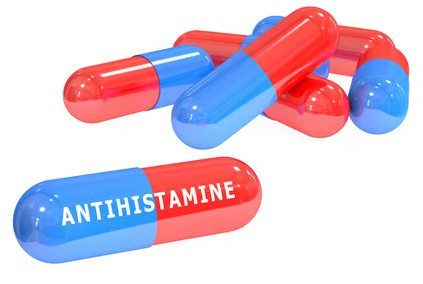

Antihistamine allergy in dogs is characterized by symptoms such as skin irritation, hives, excessive scratching, redness, swelling, and itchiness. These symptoms are generally caused by the body’s reaction to an allergen or a specific medication. Other signs of this allergy include vomiting, diarrhea, coughing, difficulty breathing, and sneezing. In severe cases, anaphylactic shock may occur. Treatment of this allergy generally involves the avoidance of the allergen or medication and the administration of antihistamines.
Antihistamine allergy in dogs is caused by an allergic reaction to an allergen or medication, usually in the form of an antihistamine. This allergy usually occurs when the body overreacts to an allergen or medication, resulting in symptoms such as skin irritation, hives, excessive scratching, redness, swelling, and itchiness. In more severe cases, vomiting, diarrhea, coughing, difficulty breathing, sneezing, and even anaphylactic shock may occur.
The diagnosis of an antihistamine allergy affecting dogs is based on a physical examination of the patient and identification of the suspected allergen or medication. The veterinarian may request additional tests, such as blood work, urinalysis, or a skin biopsy to confirm the diagnosis. Once the cause of the allergy is identified, treatment can begin to reduce symptoms and provide relief from the allergy.
Antihistamine allergy in dogs is considered to be a serious medical condition, but the mortality rate is very low if it is appropriately treated. Treatment often consists of avoiding the allergy triggers and administering antihistamines in order to reduce symptoms. In cases where anaphylactic shock occurs, immediate medical attention is necessary to prevent life-threatening consequences. In general, the mortality rate is small provided that the allergy is identified and treated promptly and appropriately.
Antihistamine allergy in dogs is an allergic reaction to an allergen or specific medication. Symptoms may include skin irritation, hives, excessive scratching, redness, swelling, itchiness, vomiting, diarrhea, coughing, difficulty breathing, and sneezing. In severe cases, anaphylactic shock may occur. Treatment typically involves avoidance of the allergen or medication and the use of antihistamines. Additionally, corticosteroids, immunosuppressants, and other anti-allergy medications may be prescribed by a veterinarian if needed.
The primary prevention method for antihistamine allergy in dogs is avoidance. It is important for owners to recognize the symptoms of allergies and to identify potential triggers, such as certain medications, foods, dust, and pollen. Additionally, owners can consult with a veterinarian to determine the most appropriate type of antihistamines for their pet, as well as the safest dosages and administration methods. In some cases, the veterinarian may also recommend certain lifestyle changes to further reduce the risk of the allergy developing or worsening.
Dog allergy is not contagious and cannot be passed to humans directly. However, the allergen responsible for causing the reaction may be something that humans are also allergic to. Therefore, humans may experience similar reactions if exposed to the same allergens as the dog. If this is the case, the individual should get tested to determine what allergen is causing the reaction and seek medical care accordingly.
Home remedies that can be useful for managing this allergy include limiting the exposure to the allergen or medication, bathing with mild shampoo, using an anti-allergenic shampoo, and spraying affected areas with a natural antihistamine spray. Additionally, keeping the pet’s environment clean and dust free and utilizing an air purifier may also help alleviate symptoms.
Although home remedies may be able to help manage dog allergies, it is always best to consult a veterinarian for a tailored plan of action specific to your pet’s needs.
Some dog breeds that are particularly susceptible to antihistamine allergies are Bull Terriers, Beagles, Dalmatians, and Poodles. These breeds are more likely to have an adverse reaction to the common antihistamine ingredient diphenhydramine, which is found in many over-the-counter medications. As such, it is important for owners of these breeds to be aware of any potential allergic reactions that their dogs might have to these medications. Additionally, special care should be taken to not give your dog an antihistamine without consulting your veterinarian first.
Have you ever had your dog experience an antihistamine allergy? How did your dog respond to the allergy and how did you feel? What methods did you use to manage and treat their allergy?
No matter the outcome, we hope that your dog is feeling better and that you have everything you need to manage the situation. may your furry friend’s health and safety come first, and we wish you the best of luck.